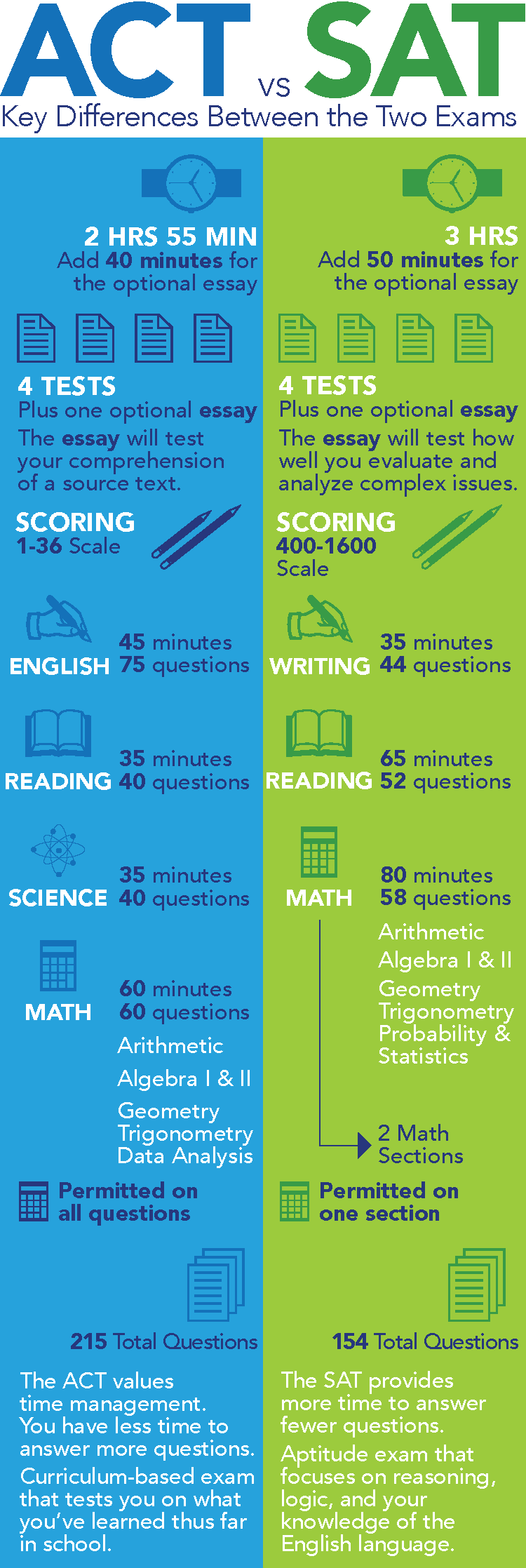
There are 45 standard multiple-choice questions and 13 student-produced responses. The mathematics section where exam takers can use a calculator has 38 questions and has a time limit of 55 minutes. The mathematics section without a calculator has 20 questions with a time limit of 25 minutes. The SAT has two mathematics sections that take a total time limit of 80 minutes. The content of the reading and writing portion of the SAT features relevant words in context, command of the evidence, expression of ideas, and standard English conventions. The writing section has 44 multiple-choice questions with a time limit of 35 minutes to complete. The reading section has 52 standard multiple-choice questions that have a time limit of 100 minutes to complete. The SAT had an optional Essay category, but this was discontinued after June 2021. The SAT Essay and SAT Subject Test have always been optional, but the core makeup of the SAT remains the same. The College Board announced in January of 2021 the elimination of two sections of the SAT. A 2005 revision added a mandatory writing component to the test for enhanced aptitude assessment. The SAT has traditionally been a two- or three-component examination: verbal and mathematics sections have been the standard for years. Let us now take a closer look at the differences between the SAT and ACT. Beyond Reading and Writing: Major Content Differences Between SAT and ACT Students who do so successfully earn points for the question, while those questions answered incorrectly simply do not contribute to a final score. They ask students about specific concepts that they learned and ask them to either identify or apply them. Instead, the questions on the ACT are direct. That is not how the questions on the ACT are structured.

In this way, the SAT rewards guessing on theoretical questions while the ACT rewards only correct answers to direct questioning. Correct questions earn the most points while guessing or incorrect answers contribute only a fraction of the points to a final test score. The questions also ask how they would use their skills to find a solution to a complex question and try to assess the student’s capacity for using skills to achieve positive outcomes. It measures a student’s problem-solving and analytical skills to identify a problem, search for relevant information, develop a strategy to overcome the problem, applying the strategy, and finally resolve the problem. The exam asks the student to use their reasoning abilities to solve a problem. Theoretical Test Promptsīecause the SAT is an aptitude test, its questions are rather abstract and hypothetical. The SAT is not a measure of high school material learned or knowledge retained.

These abilities are an indication as to how a student will perform long-term in a collegiate academic environment. The answers to the questions on the SAT show the student’s ability to reason and their capacity to take in new knowledge. A good score on this exam provides the student with a competitive edge against other students in gaining entrance into top universities. Taking the SAT is an important step in a student’s academic life. It also determines if the student has the potential to excel in a collegiate academic environment.

The SAT is the most common testing tool that colleges and universities use to determine whether students are ready for college-level course work.

The SAT originally stood for Scholastic Aptitude Test, but the acronym was dropped as the test evolved over the years. The most fundamental difference between the SAT and the ACT involves the difference between aptitude and achievement. Aptitude: The Biggest Difference Between the Tests Before scheduling either one of these examinations for undergraduate admission, consider the fundamental differences between them to discern which one will provide the best outcome for successful acceptance to a university.Īchievement vs. Each test gives admissions counselors different insights into what students have learned and demonstrates their long-term potential for advanced achievement in the college setting. They are also widely accepted by undergraduate admissions committees. What is the difference between the SAT and ACT? These tests measure a student’s success in high school. During the college admissions process, many students have one pressing question.


 0 kommentar(er)
0 kommentar(er)
